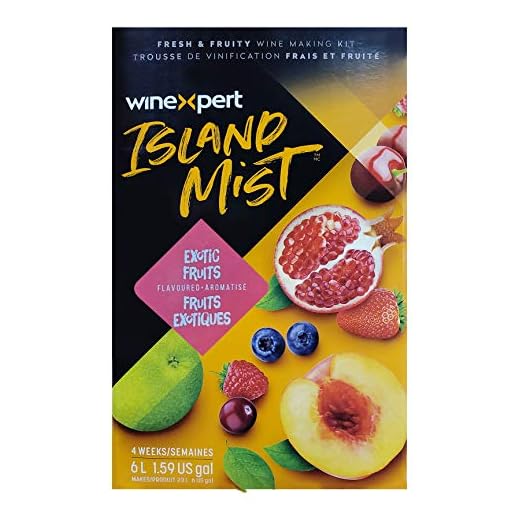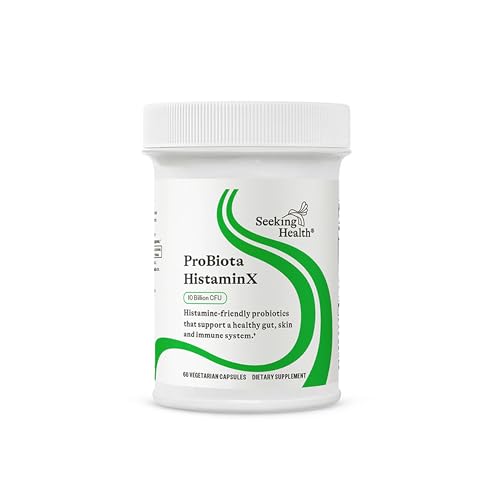



Yes, this particular pink drink is indeed classified as a blush beverage. It offers a refreshing taste profile that appeals to many, particularly those who enjoy lighter styles with a hint of sweetness. With its pale hue and fruity notes, it’s a popular choice for casual sipping or pairing with a variety of dishes.
Originating in the United States, this specific variety has garnered a reputation for its accessibility and versatility. Characterized by flavors of strawberries, watermelon, and citrus, it makes an excellent complement to summertime gatherings and outdoor meals. For those looking to explore this category, I recommend trying it chilled, served alongside grilled seafood or fresh salads, to enhance the overall experience.
As an enthusiast, I’ve found that this drink’s appeal lies not only in its taste but also in its ability to bridge the gap between red and white varieties. Whether you’re new to this style or a seasoned enthusiast, there’s always something new to discover. Feel free to explore different producers to find a version that resonates with your palate.
Is White Zinfandel a Rosé Wine?
Yes, this particular type of beverage is indeed classified as a pink-hued drink. It is made from a specific grape variety, which contributes to its unique flavor profile. The production method involves a brief contact with the grape skins, allowing for limited color extraction, resulting in its characteristic light hue.
This beverage is often sweeter compared to traditional pink drinks, appealing to those who prefer a fruit-forward taste. It typically showcases notes of strawberries, cherries, and watermelon, making it a versatile option for various occasions. When serving, consider pairing it with light salads, grilled chicken, or spicy Asian dishes to enhance the overall dining experience.
For enthusiasts exploring options, it’s beneficial to sample various brands and styles, as they can differ significantly in sweetness and acidity. Many producers experiment with blending, leading to diverse flavor profiles within this category. Engaging with local wine shops or tastings can also provide insight into your preferences.
In summary, this pink-hued drink holds a distinct place within the broader spectrum of beverages, offering an enjoyable experience with its approachable taste and versatility. Whether enjoyed on its own or paired with food, it remains a popular choice for many wine lovers.
Understanding the Production Process of White Zinfandel
To truly appreciate the unique characteristics of this type of beverage, one must understand its production. The process begins with the selection of grapes, typically sourced from California’s warm climate, which allows for optimal ripening.
Here’s a breakdown of the key steps involved:
- Harvesting: Grapes are hand-picked at the right moment to ensure they have the desired sugar levels and acidity.
- Crushing and Pressing: The grapes are crushed, and the juice is separated from the skins. This step is crucial as it affects the color and flavor profile.
- Fermentation: The juice undergoes fermentation at controlled temperatures. This process can last from a few days to a couple of weeks, depending on the desired outcome.
- Blending: After fermentation, winemakers may blend different batches to achieve a consistent flavor and aroma.
- Filtration and Bottling: The final product is filtered to remove any sediment and then bottled for aging or immediate release.
Temperature control during fermentation is critical; cooler temperatures help preserve the fresh fruit flavors that are signature to this drink. For storage, consider using a best solar generator for refrigerators to maintain optimal conditions.
This meticulous process results in a beverage that is both flavorful and approachable, making it a favorite among many enthusiasts.
Flavor Profile: How White Zinfandel Compares to Other Rosé Wines
When exploring the taste characteristics of this pink varietal, you’ll notice it often showcases a delightful balance of sweetness and acidity. Its profile typically features notes of strawberries, watermelon, and sometimes, a hint of citrus. These flavors can be quite pronounced, setting it apart from other pink wines that may lean more toward dryness.
In comparison with traditional rosés, the sweetness level in this specific type can be higher, making it appealing to those who prefer a fruit-forward experience. Many other pink wines, particularly those from regions like Provence, often emphasize a drier, more mineral-driven profile with flavors of red berries, herbs, and sometimes floral notes. This difference is essential for pairing; while the sweeter style complements spicy dishes and fruit-based desserts, drier counterparts can enhance seafood and light salads.
Another point of distinction lies in the winemaking techniques. The method for producing this variety often involves a brief skin contact period, resulting in its lighter pink hue and fruit-forward nature. In contrast, many other pink wines may undergo longer skin contact or blending techniques, influencing their depth and complexity.
When considering food pairings, I often recommend this particular variant with grilled chicken, barbecue, or even a spicy Asian dish. Its sweetness can help balance heat and bring out the flavors of the dish. For drier pink wines, think of pairing them with grilled fish or a classic Niçoise salad, where the acidity and minerality can shine through.
Ultimately, if you’re seeking a refreshing and approachable option, this pink variant stands out with its sweeter profile, making it a great choice for casual sipping or festive gatherings. Understanding these nuances will enhance your enjoyment and appreciation of both this style and its drier counterparts in the pink wine spectrum.
Food Pairing Tips for White Zinfandel Enthusiasts
Pairing this delightful beverage with food can enhance your experience significantly. Start with light appetizers such as shrimp cocktails or fresh salads topped with citrus vinaigrette. The acidity and sweetness complement the delicate flavors beautifully.
Entrees That Shine
Grilled chicken with a mango salsa or fish tacos are excellent options. The tropical notes in the drink harmonize with the spices and freshness of these dishes. For vegetarian choices, consider dishes featuring roasted vegetables or a caprese salad. The crispness of the beverage balances the richness of the cheese and the acidity of tomatoes.
Sweet Treats
For dessert, fruit-based options like tarts or sorbets work wonders. A berry tart pairs seamlessly, enhancing the fruity essence of your drink. Cheese plates featuring creamy brie or soft goat cheese can also create a delightful contrast, making each sip and bite memorable.
Exploring the Popularity of White Zinfandel in the Wine Market
To truly appreciate the appeal of this pink-hued varietal, it’s important to recognize its unique characteristics and marketing strategies that have contributed to its widespread acceptance. The blend of sweetness and acidity makes it approachable, especially for those new to the world of fermented grapes.
Market Trends and Consumer Preferences
In the late 20th century, many consumers began to lean towards lighter, fruit-forward options, and this style emerged as a favorite. Its accessibility in both flavor and price point has solidified its place in many households. The affordability paired with its refreshing quality makes it a popular choice for casual gatherings and celebrations.
The Role of Marketing in Popularity
Effective marketing campaigns have played a crucial role in promoting this pink drink. Bright, inviting labels and clever advertisements often target young adults and casual drinkers, appealing to those seeking a relaxed experience. This strategy has cultivated a loyal following, ensuring a steady demand in the marketplace.
| Year | Sales Growth (%) |
|---|---|
| 2010 | 5 |
| 2015 | 10 |
| 2020 | 15 |
| 2023 | 12 |
As we look to the future, it’s clear that the allure of this fruity beverage will continue to attract attention. Its blend of ease and flavor makes it a staple in the collections of both casual drinkers and connoisseurs alike.
Common Misconceptions About White Zinfandel and Rosé Wines
Many consumers mistakenly believe that all pink beverages fall into the same category. It’s crucial to clarify that not all pink-hued drinks are created equal. A common misconception is that the sweetness of certain offerings defines their quality or authenticity. In reality, sweetness levels can vary widely across different types, and many high-quality selections can be pleasantly dry.
Another frequent misunderstanding is the idea that these pink varieties are only suitable for casual or warm-weather occasions. This is far from the truth. Many exceptional versions can complement a wide range of dishes and settings, making them versatile options for year-round enjoyment.
Some enthusiasts also think that these beverages are simple or lacking in complexity. However, this could not be further from the truth. The production methods and grape selection can lead to a rich tapestry of flavors and aromas, often surprising those who approach them with preconceived notions.
There’s also the belief that the styles are interchangeable, which can lead to disappointment during tastings. Each type boasts unique characteristics influenced by the grape variety, production technique, and terroir. Understanding these differences enhances the tasting experience and encourages exploration of new options.
Lastly, many assume that the popularity of a certain style dictates its quality. While trends do influence consumer preferences, they do not necessarily reflect the true craftsmanship behind each bottle. Exploring diverse offerings will uncover hidden gems that challenge the status quo.
FAQ:
What is white Zinfandel and how does it relate to rosé wine?
White Zinfandel is a type of rosé wine made from the Zinfandel grape variety. The wine is produced using a method where the grape skins are in contact with the juice for a short period of time, which gives it a pink hue. While it is often sweeter than most traditional rosé wines, it falls under the rosé category due to its production method and the fact that it is made from red grapes.
Is white Zinfandel sweeter than other rosé wines?
Yes, white Zinfandel is generally sweeter than many other types of rosé wines. This sweetness comes from the winemaking process, where fermentation is stopped before all sugars are converted into alcohol. Many people enjoy its fruity flavors, making it a popular choice for those who prefer sweeter wines. However, there are drier rosés available that will appeal to those looking for less sweetness.
Can I use white Zinfandel in cooking, and if so, how?
Yes, white Zinfandel can be used in cooking, particularly in recipes that benefit from its sweetness and fruity flavor. It works well in marinades, sauces, and even desserts. For example, it can be used to deglaze a pan after sautéing chicken or added to fruit salads for an enhanced flavor. Its sweetness can complement many dishes, especially those with a spicy or tangy profile.
How should I serve white Zinfandel for the best experience?
To enjoy white Zinfandel at its best, it should be served chilled. A temperature of around 45-50°F (7-10°C) is ideal. Use a standard white wine glass to allow the fruity aromas to develop. Pairing it with light dishes like salads, seafood, or grilled chicken can enhance the tasting experience. Its versatility makes it suitable for various occasions, from casual gatherings to more formal events.
Are there any food pairings that work particularly well with white Zinfandel?
White Zinfandel pairs well with a variety of foods due to its sweet and fruity profile. It complements dishes such as grilled chicken, light pasta salads, and seafood. It also works nicely with spicy dishes, as the sweetness can help balance out heat. Additionally, it can be a delightful accompaniment to fruit-based desserts, enhancing the overall flavor experience.








